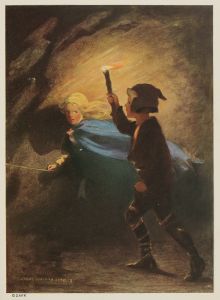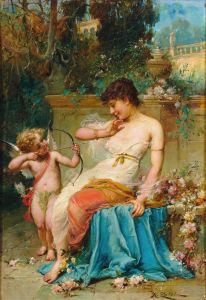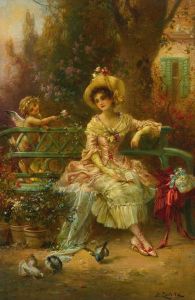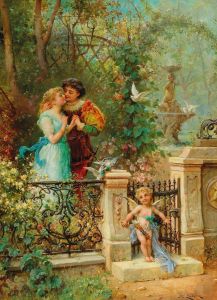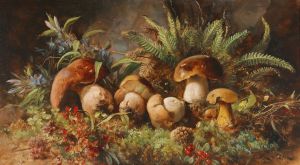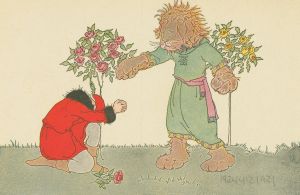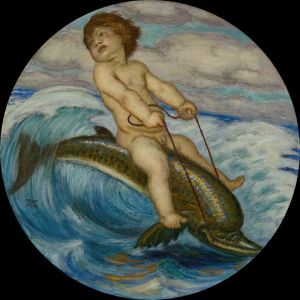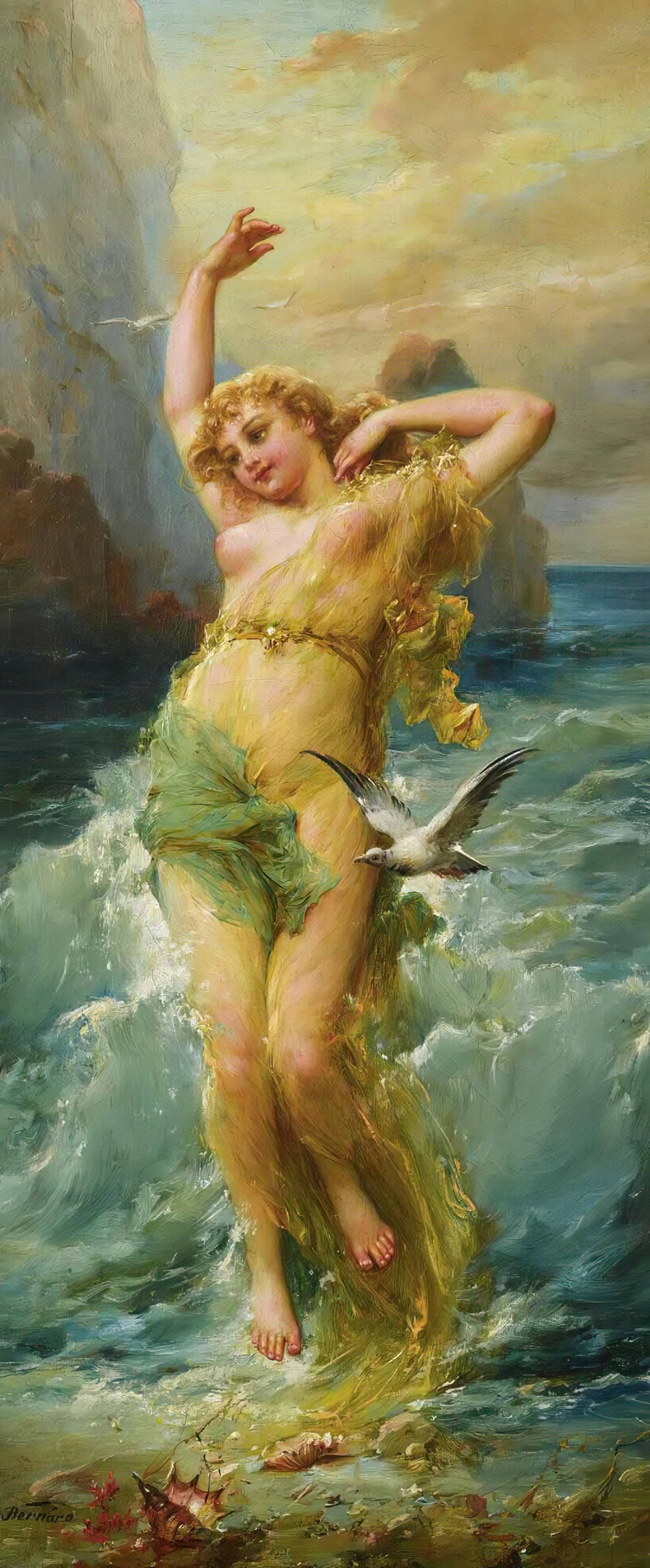
Water Nymph
A hand-painted replica of Hans Zatzka’s masterpiece Water Nymph, meticulously crafted by professional artists to capture the true essence of the original. Each piece is created with museum-quality canvas and rare mineral pigments, carefully painted by experienced artists with delicate brushstrokes and rich, layered colors to perfectly recreate the texture of the original artwork. Unlike machine-printed reproductions, this hand-painted version brings the painting to life, infused with the artist’s emotions and skill in every stroke. Whether for personal collection or home decoration, it instantly elevates the artistic atmosphere of any space.
Hans Zatzka was an Austrian painter known for his romantic and mythological subjects, often featuring ethereal and enchanting female figures. One of his notable works is "Water Nymph," which exemplifies his characteristic style and thematic focus. Zatzka was born on March 8, 1859, in Vienna, Austria, and he studied at the Academy of Fine Arts in Vienna from 1877 to 1882. His education and the cultural environment of Vienna during this period greatly influenced his artistic development.
"Water Nymph" is a quintessential example of Zatzka's fascination with mythological and fantastical themes. The painting typically depicts a nymph, a mythological spirit of nature imagined as a beautiful maiden inhabiting rivers, woods, or other locations. In Zatzka's work, the water nymph is often portrayed in a serene and idyllic setting, surrounded by lush landscapes or tranquil waters, which enhances the dreamlike quality of the scene. The nymph herself is usually depicted with delicate features, flowing hair, and graceful poses, embodying the idealized beauty and allure commonly associated with such mythological figures.
Zatzka's technique is characterized by meticulous attention to detail and vibrant use of color, which brings his subjects to life. His ability to render textures, such as the softness of skin or the translucence of water, adds to the realism and charm of his paintings. The use of light in "Water Nymph" is particularly noteworthy, as it often creates a luminous effect that highlights the ethereal nature of the nymph and her surroundings.
The popularity of Zatzka's work during his lifetime can be attributed to the widespread appeal of romantic and mythological themes in 19th-century European art. His paintings were well-received by the public and often reproduced as prints, which helped disseminate his work to a broader audience. Zatzka's art reflects the broader artistic trends of the time, including a fascination with escapism and the idealization of nature and beauty.
Despite the popularity of his work, Zatzka often signed his paintings with pseudonyms such as "Joseph Bernard" or "Bernard Zatzka," which has sometimes led to confusion regarding the attribution of his works. This practice was not uncommon among artists of the period who sought to appeal to different markets or avoid contractual restrictions.
Hans Zatzka continued to paint prolifically throughout his life, producing a vast body of work that includes not only mythological subjects but also religious themes and genre scenes. He passed away on December 17, 1945, in Vienna, leaving behind a legacy of art that continues to captivate audiences with its beauty and imagination.
"Water Nymph" remains a testament to Zatzka's skill and his ability to transport viewers into a world of fantasy and wonder. His work is celebrated for its technical excellence and its ability to evoke the timeless allure of mythological narratives. Today, Zatzka's paintings are held in private collections and occasionally appear in art auctions, where they continue to be appreciated for their artistic and historical significance.









